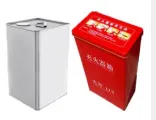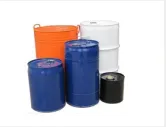-
 8613931787312
8613931787312 -
 Botou Industrial Zone on the east side of National Highway 104, Botou City, Hebei Province
Botou Industrial Zone on the east side of National Highway 104, Botou City, Hebei Province
- Afrikaans
- Albanian
- Amharic
- Arabic
- Armenian
- Azerbaijani
- Basque
- Belarusian
- Bengali
- Bosnian
- Bulgarian
- Catalan
- Cebuano
- Corsican
- Croatian
- Czech
- Danish
- Dutch
- English
- Esperanto
- Estonian
- Finnish
- French
- Frisian
- Galician
- Georgian
- German
- Greek
- Gujarati
- haitian_creole
- hausa
- hawaiian
- Hebrew
- Hindi
- Miao
- Hungarian
- Icelandic
- igbo
- Indonesian
- irish
- Italian
- Japanese
- Javanese
- Kannada
- kazakh
- Khmer
- Rwandese
- Korean
- Kurdish
- Kyrgyz
- Lao
- Latin
- Latvian
- Lithuanian
- Luxembourgish
- Macedonian
- Malgashi
- Malay
- Malayalam
- Maltese
- Maori
- Marathi
- Mongolian
- Myanmar
- Nepali
- Norwegian
- Norwegian
- Occitan
- Pashto
- Persian
- Polish
- Portuguese
- Punjabi
- Romanian
- Russian
- Samoan
- scottish-gaelic
- Serbian
- Sesotho
- Shona
- Sindhi
- Sinhala
- Slovak
- Slovenian
- Somali
- Spanish
- Sundanese
- Swahili
- Swedish
- Tagalog
- Tajik
- Tamil
- Tatar
- Telugu
- Thai
- Turkish
- Turkmen
- Ukrainian
- Urdu
- Uighur
- Uzbek
- Vietnamese
- Welsh
- Bantu
- Yiddish
- Yoruba
- Zulu
3-Roller Plate Bending Machine Precision & Durability Guaranteed
- Introduction to 3 Roller Plate Bending Machines
- Technical Advantages and Performance Metrics
- Competitive Analysis of Leading Manufacturers
- Customization Options for Specific Industrial Needs
- Real-World Application Case Studies
- Maintenance Tips for Long-Term Efficiency
- Why Invest in a 3 Roller Plate Bending Machine?

(3 roller plate bending machine)
Introduction to 3 Roller Plate Bending Machines
The 3 roller plate bending machine
is a cornerstone in metal fabrication, designed to curve steel plates into cylinders, cones, or arcs with precision. Unlike traditional methods requiring multiple passes, modern variants achieve tolerances as tight as ±0.1mm, reducing material waste by up to 15%. Industries from aerospace to renewable energy rely on these machines for producing wind turbine towers, pressure vessels, and architectural components.
Technical Advantages and Performance Metrics
Advanced models feature CNC controls enabling bend angles between 0.5° to 180°, with thickness capacities ranging from 1mm to 300mm. Hydraulic systems deliver 20-400 MPa of force, while asymmetrical roller designs minimize deflection during operation. Key metrics include:
- Roller diameter: 200mm–800mm
- Maximum plate width: 6,000mm
- Motor power: 15kW–150kW
Competitive Analysis of Leading Manufacturers
| Brand | Max Thickness (mm) | Price Range (USD) | Warranty | Material Compatibility |
|---|---|---|---|---|
| Haco | 120 | $85,000–$220,000 | 3 years | Stainless Steel, Titanium |
| Durma | 80 | $62,000–$180,000 | 2 years | Aluminum, Carbon Steel |
| Baileigh | 100 | $78,000–$195,000 | 5 years | Brass, Copper Alloys |
Customization Options for Specific Industrial Needs
Manufacturers offer modular configurations:
- Variable Geometry Rollers: Adjustable center distances (500–4,000mm) for multi-radius bending.
- Automated Feed Systems: Laser-guided alignment reduces setup time by 40%.
- High-Temperature Kits: Enable processing of Inconel alloys up to 900°C.
Real-World Application Case Studies
Case 1: A German shipbuilder reduced hull production time by 30% using a 3-roller system with 12,000 kN bending force. Case 2: A U.S. oil refinery achieved 99.7% circularity in 50mm-thick pipe fabrication through CNC-controlled pre-bending sequences.
Maintenance Tips for Long-Term Efficiency
Lubricate roller bearings every 500 operating hours using ISO VG 220 grease. Calibration checks every 6 months maintain positional accuracy within 0.05mm. Replace hydraulic seals after 10,000 cycles to prevent pressure drops exceeding 15%.
Why Invest in a 3 Roller Plate Bending Machine?
For workshops handling ≥200 tons/year of metal, a 3 roller plate bending machine delivers ROI within 18–24 months. Newer models with IoT integration provide real-time wear analytics, cutting unplanned downtime by 55%. When evaluating 3 roller plate bending machine price, prioritize lifecycle costs over initial capital—high-efficiency units save $12–$18 per ton in energy expenses.

(3 roller plate bending machine)
FAQS on 3 roller plate bending machine
Q: What is a 3 roller plate bending machine used for?
A: A 3 roller plate bending machine is designed to bend metal plates into cylindrical or conical shapes. It utilizes three rollers to apply pressure and curvature, commonly used in industries like construction, shipbuilding, and manufacturing.
Q: What factors affect the price of a 3 roller plate bending machine?
A: The price depends on the machine's capacity, material thickness tolerance, brand reputation, and additional features like automation. Higher-capacity models with CNC controls typically cost more than basic manual versions.
Q: How does a 3 roller plate bending machine differ from other bending machines?
A: Unlike 4-roller or hydraulic press machines, a 3-roller version offers simpler operation and lower costs but may require pre-curved plate edges. Its compact design suits small-to-medium workshops needing consistent curved metal profiles.
Q: Can a 3 roller plate bending machine handle stainless steel?
A: Yes, most 3 roller machines can bend stainless steel, provided they have sufficient roller strength and torque. Always check the machine's maximum yield strength and thickness specifications for specific materials.
Q: How do I maintain a 3 roller plate bending machine?
A: Regular lubrication of rollers and gears, inspection for wear, and alignment checks are essential. Avoid overloading the machine and clean debris after use to ensure precision and longevity.
-
Understanding Automatic Seam Welding Machines: A Game Changer in Welding TechnologyNewsJul.18,2025
-
Revolutionizing Packaging: The Role of Welding Machines in Steel and Tin Can ManufacturingNewsJul.18,2025
-
Precision in Motion: Exploring Seam Welding Machines for Industrial FabricationNewsJul.18,2025
-
Mastering Precision Bending: A Guide to Tube Benders and Their TypesNewsJul.18,2025
-
Inside the World of Barrel Manufacturing: Machines, Lines, and CostsNewsJul.18,2025
-
Exploring the Technology Behind Elbow Bending Machines in Pipe ManufacturingNewsJul.18,2025
-
Unlocking the Power of Light: Exploring Modern Laser Welding SolutionsNewsJul.15,2025
-
 Pneumatic Handle Welding MachineSep . 13, 2024
Pneumatic Handle Welding MachineSep . 13, 2024 -
 Fully Automatic Kaiping Production LineOct . 17, 2024
Fully Automatic Kaiping Production LineOct . 17, 2024 -
 Fully Automatic Metal Bucket Lifting HeadphonesSep . 14, 2024
Fully Automatic Metal Bucket Lifting HeadphonesSep . 14, 2024

